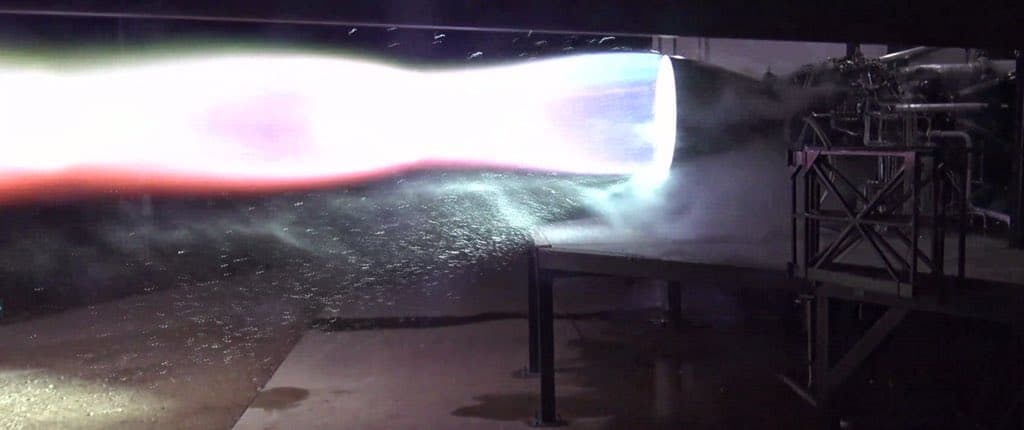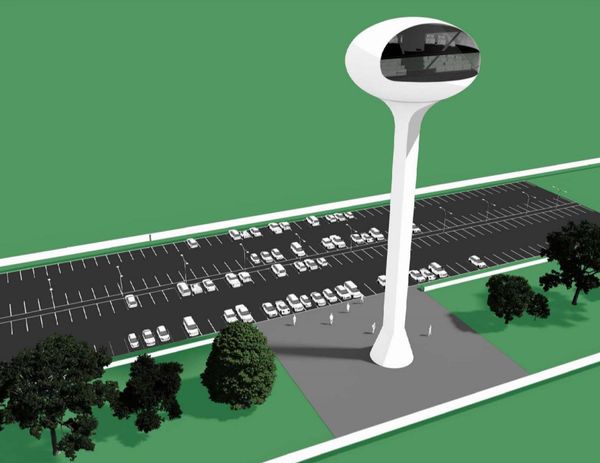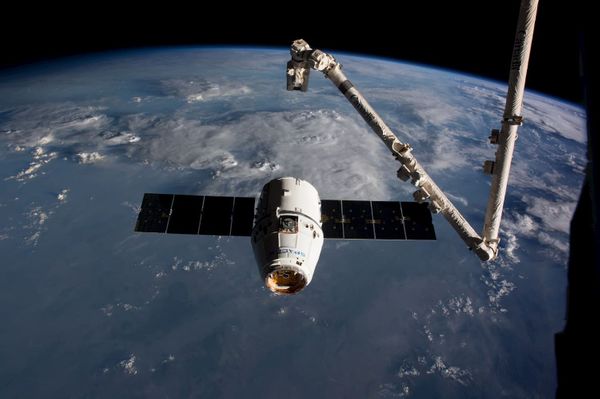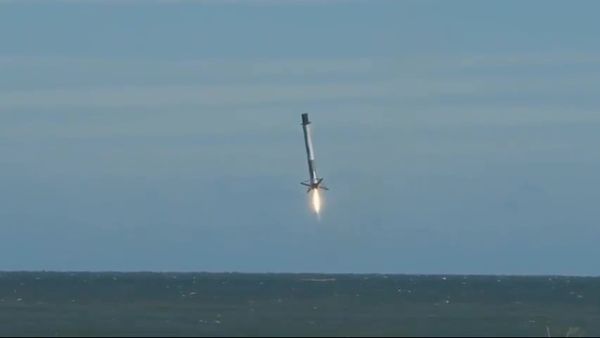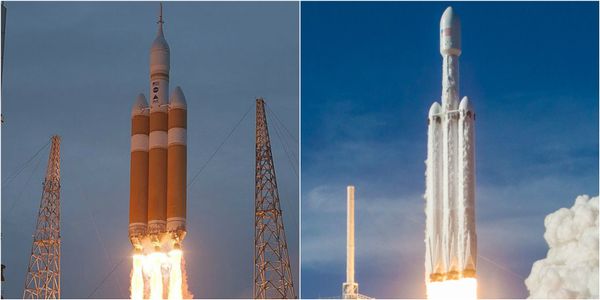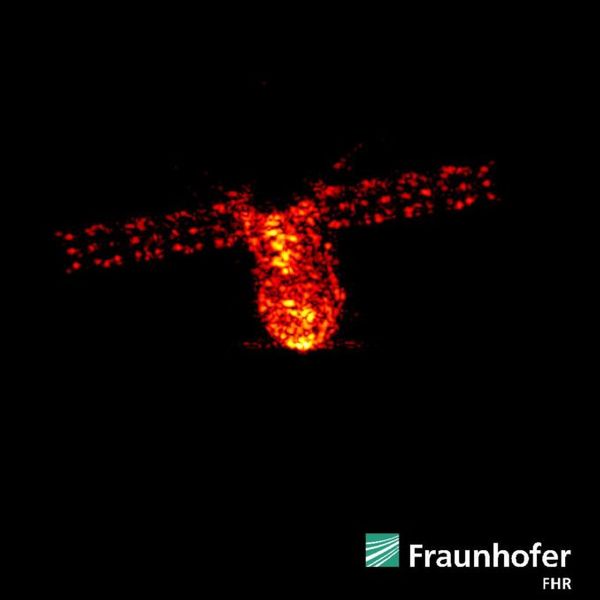Late Sunday night, February 10th, 2019, Elon Musk took to twitter to announce a new testing milestone for the Raptor methalox (liquid methane and liquid oxygen) engine.
Raptor reached 268.9 bar today, exceeding prior record held by the awesome Russian RD-180. Great work by @SpaceX engine/test team! pic.twitter.com/yPrvO0JhyY
— Elon Musk (@elonmusk) February 11, 2019
This milestone pushed the Raptor past the previous record holder for rocket engine chamber pressure, the RD-170/180 family of engines, developed in the 1980s. While the 11 second test recorded impressive numbers, SpaceX believes Raptor performance could grow 10-20% by using subcooled propellants, which have increased density.
Why is Chamber Pressure Important?
A diagram of a converging-diverging nozzle, showing flow from left to right. Color represents roughly the speed of flow, from green (slow) to red (fast). Via Wikipedia
Rocket engines are designed to convert stored energy in propellants into high velocity moving mass. The momentum of the exhaust exerts a force on the rocket and allows for acceleration even in a vacuum. The key operating mechanism is the acceleration of the exhaust using a converging-diverging nozzle. This converts a region of high-pressure and temperature, slow moving gas, to a region of fast moving, low pressure and temperature gas. A higher chamber pressure means a greater differential in pressure and more thrust and efficiency.
This also has a knock-on effect of reducing the total size of the engine. With a high chamber pressure and a small throat, a small nozzle can be used. A smaller engine is easier to cluster underneath a rocket, allowing for greater total thrust.
What Does This Mean for Raptor?
Preparing to fire the Starship Raptor engine at @SpaceX Texas pic.twitter.com/8JCOi1BG6z
— Elon Musk (@elonmusk) February 1, 2019
Raptor on the test stand, just under two weeks ago. The high chamber pressure and full-flow staged combustion design makes Raptor deceptively compact.
Raptor is a liquid methane / liquid oxygen full-flow staged combustion (FFSC) engine destined for Starship and Super Heavy. While pre-burner tests and sub-scale versions have been demonstrated for years, these tests marks the first time a flight engine has been fired. These engines will go on the Starship Hopper and become the first FFSC to take flight.
Multiple test fires have been conducted with this engine and it looks like some performance margin still exists. The first Raptors to fly will not have vacuum optimized nozzles, which have an increased diameter to improve efficiency. This means less development time and complexity for the first flight, but it does mean SpaceX can optimize future versions of Starship. Raptor could reach 380s of Isp with an optimized nozzle which would enable larger payloads to Mars down the road. Packing in larger nozzles into existing rockets is also an issue. While some had speculated that Raptor may utilize an extensible nozzle to remain compact, like the RL-10B, Elon Musk confirmed larger Raptor nozzles would be fixed.
The rocket engine is the foundation of a new launch vehicle and the fuel type, efficiency, and max thrust define constraints that guide launch vehicle design. Spaceship and Super Heavy are ambitious designs and Raptor needed to match them. Continued, successful test firings of Raptor pave the way to test flights of Starship Hopper in the future.
Starship Updates
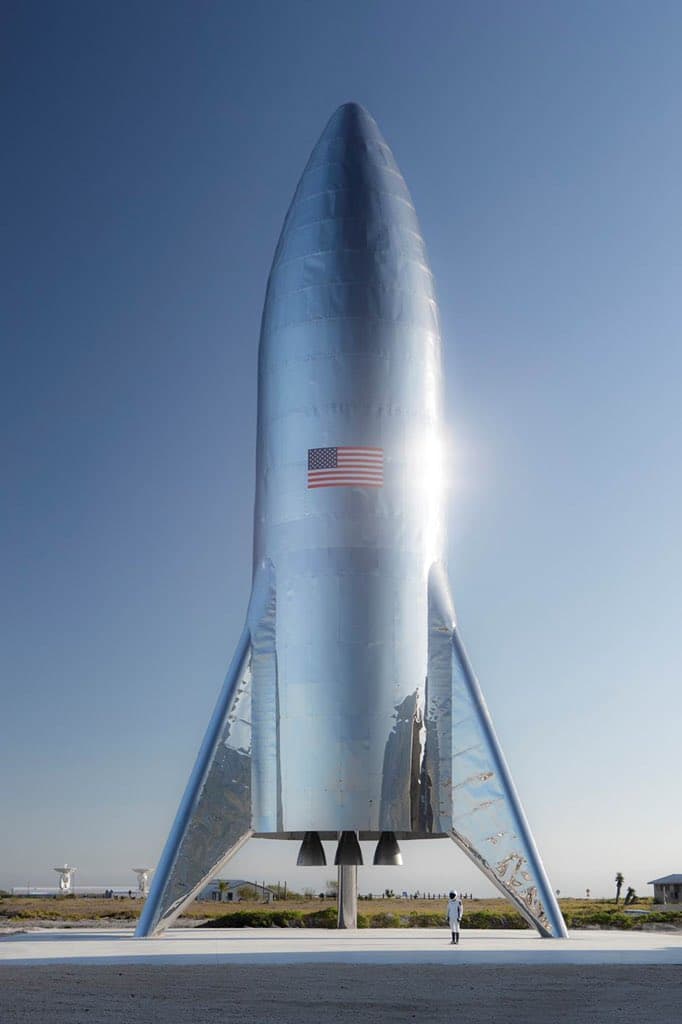
Constructed in a field in Boca Chica, Texas, Starship Hopper took shape in under a month. Flight-ready Raptors, plumbing, and avionics still need to be installed before test flights up to 5km can begin.
One of the biggest surprises was Musk's claim that the new Starship / Super Heavy architecture may be cheaper to manufacture than the mature Falcon 9 / Falcon Heavy architecture. For reference, Falcon 9 launches cost as low as $60 million, including launch services and amortized costs. Starship is more massive and complex in almost every way, and it is unlikely the first Starship vehicles match that target. However, from a raw materials perspective, stainless steel construction may be cheaper than the aluminum-lithium used on Falcon 9 and dramatically cheaper than the carbon composite included in the designs for BFR. In a recent interview with Popular Mechanics, Musk claimed that "carbon fiber is $135 a kilogram, 35 percent scrap, so you’re starting to approach almost $200 a kilogram. The steel is $3 a kilogram." However, raw material costs are not the largest cost driver in rocket manufacturing, with labor and fabrication a significant factor. Even then, Raptor uses exotic alloys developed by SpaceX which are sure to have an exorbitant price tag.
With Starship costs in flux due to the material change, we asked if the target ticket price of $500k round-trip to Mars was still feasible.
Very dependent on volume, but I’m confident moving to Mars (return ticket is free) will one day cost less than $500k & maybe even below $100k. Low enough that most people in advanced economies could sell their home on Earth & move to Mars if they want.
— Elon Musk (@elonmusk) February 11, 2019
One of the biggest questions around commercial spaceflight, both in Low Earth Orbit (LEO) and beyond, has been how involved the general public will be. Apollo was a government-run program, and as a result hundreds of thousands of photos, videos, and technical documents are publicly available as a record to the program.
Just planning on keeping the public informed about progress & setbacks. Will be some RUDs along the way, but excitement is guaranteed!
— Elon Musk (@elonmusk) February 11, 2019
While SpaceX remains a private company with no obligation to share its activities to the general public, you can capture each SpaceX launch on YouTube, check out public domain launch photography on Flickr, and follow SpaceX and Elon Musk on Twitter.
Want to Learn More?
What do you think of the switch from carbon composite to stainless steel? Do you think Starship Hopper will fly this year? Let us know over on our forum, forum.spexcast.com!

